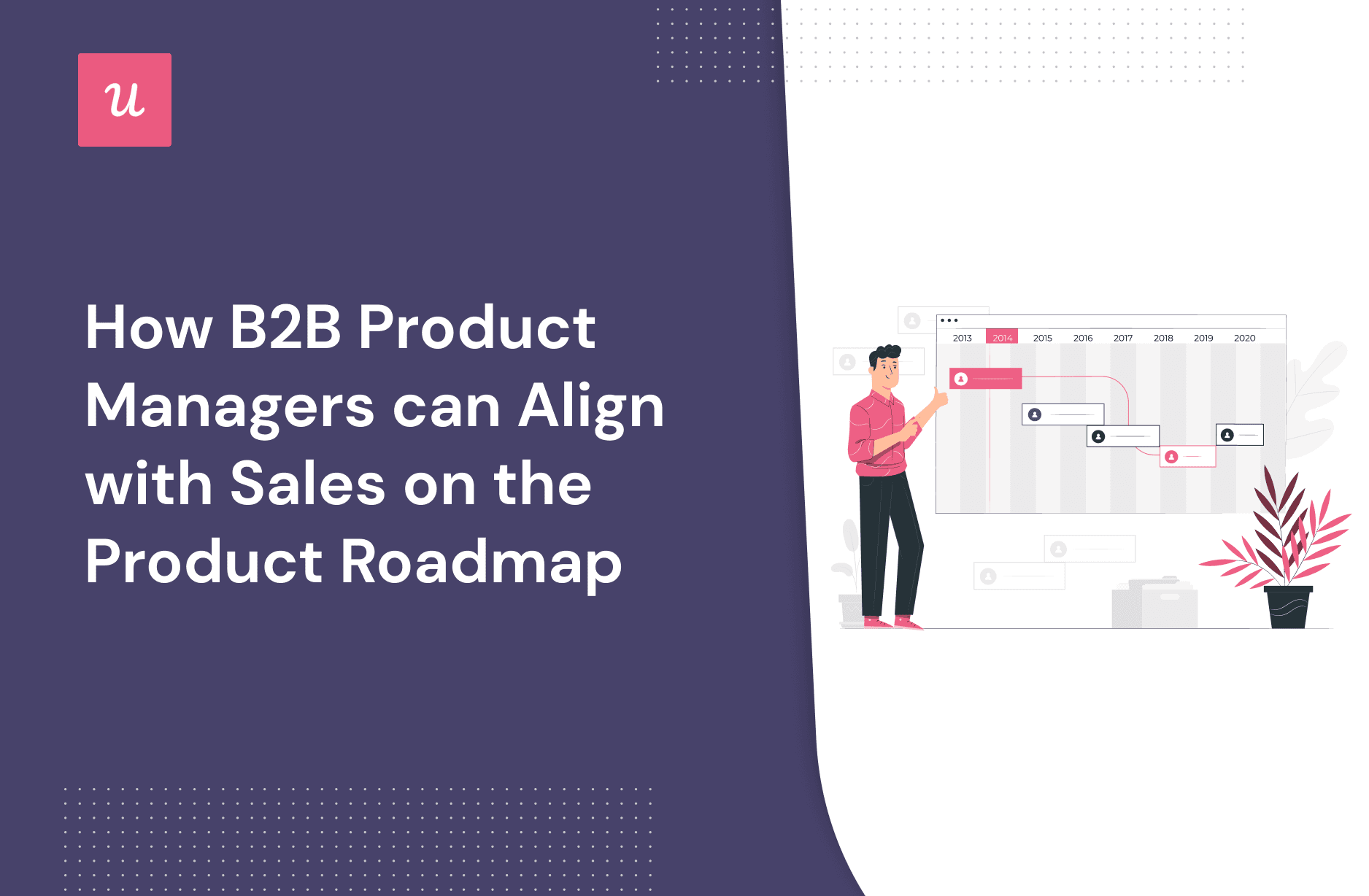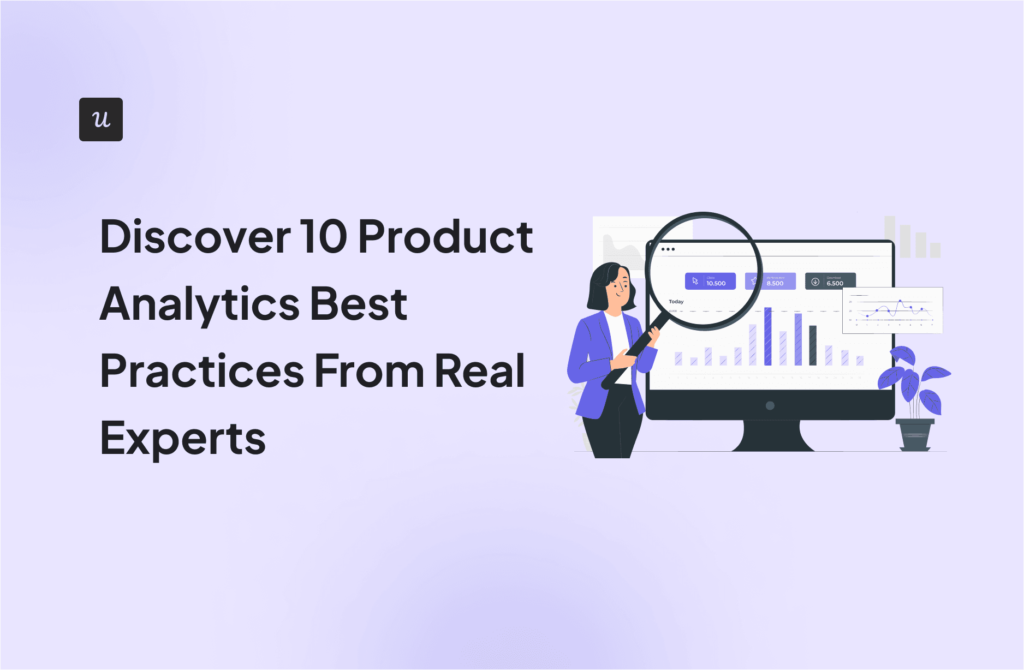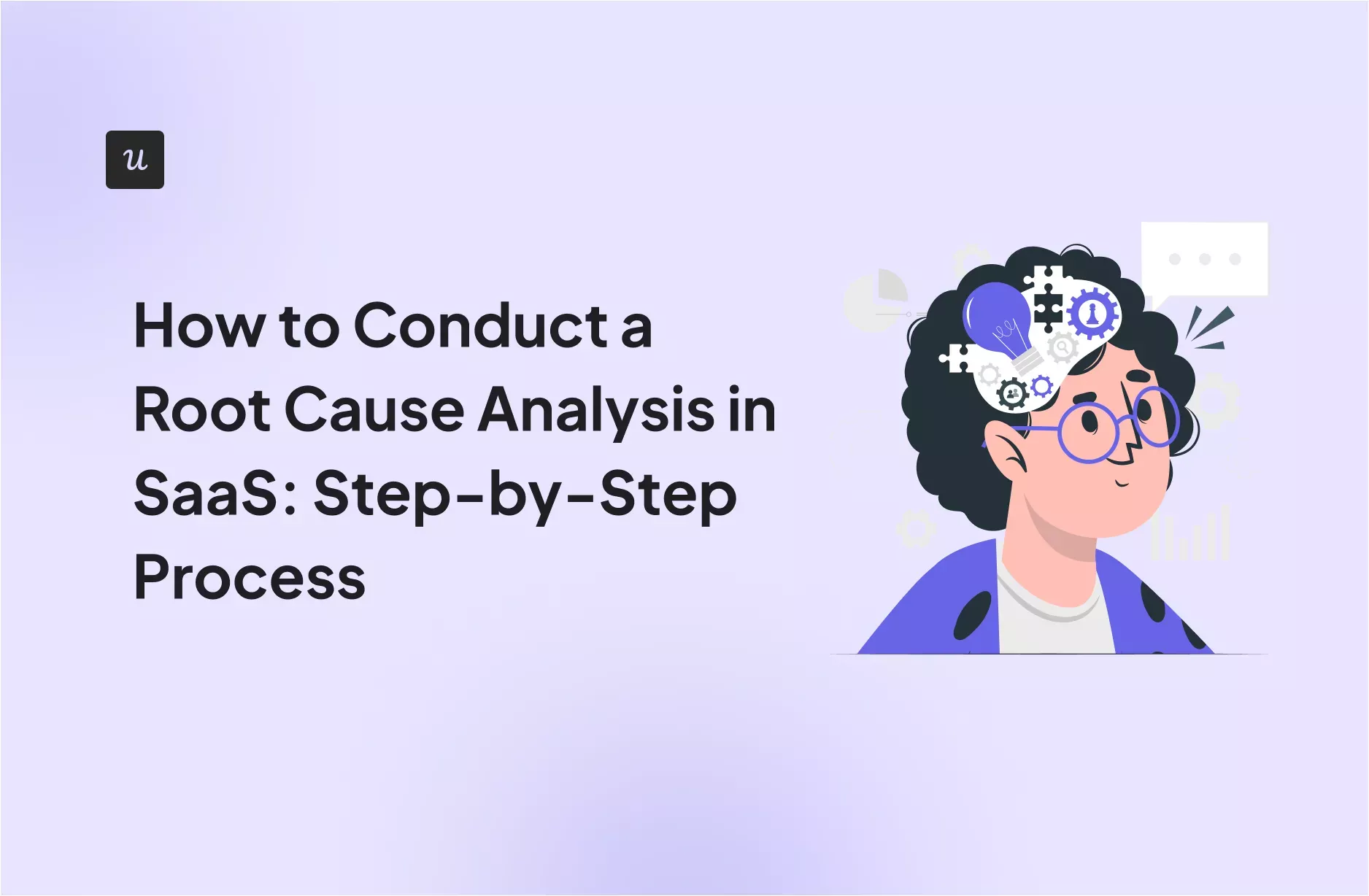
How B2B Product Managers Can Align with Sales On The Product Roadmap6 min read
How can product managers align with sales teams to build product roadmaps that deliver on customers’ needs?
Do you spend too much time thinking about past victories instead of focusing on future success as a product manager? The answer is yes if feature requests from existing customers consume too many resources and stifle innovation. Current customers have no shortage of internal advocates:
- Customer success
- Professional services
- Customer support
- Customer advisory boards
- Senior executives
With so many voices advocating for current customers’ needs, it can be easy for product managers to overlook a key source of innovation: new buyers.
But working with sales teams to get reliable information from potential customers isn’t easy—or enjoyable—for most product managers. Sales can be notorious for communicating buyers’ needs sporadically and for self-serving reasons. A big deal that just needs a few “special features” to get it across the finish line. Prospects who are willing to switch if they’re assured of a few “me-too” features. A mad dash to hit quota at the end of a sales cycle…
Surely there’s a better approach for understanding new buyers’ needs and aligning with sales teams on the product roadmap. Consider these three steps:
Get The Insights!
The fastest way to learn about Product Growth, Management & Trends.
1. Proactively collect data
Getting thrown into last-minute sales calls with prospects isn’t the only—or best—way to collect data from new buyers. In reality, product managers have numerous tools at their disposal:
Customer Relationship Management (CRM)
Most sales teams require reps to choose a reason for a lost deal when they close out a deal. For product managers seeking insights into buyers’ needs, this should be an excellent source of information.

Unfortunately, I have found the closed-lost reasons and notes to be unreliable. Sellers are rarely motivated to provide as much information as they could. In addition, they do not have a complete understanding of buyers’ true motivations. Buyers can purposely mislead or withhold information from reps during a buying process.
Industry analysts
The reports of analysts can be extremely helpful in understanding trends across vendors and markets in general. Therefore, they aren’t very useful to understand what’s driving specific ICPs and personas in today’s market.

Sales surveys
You can survey sales reps on recently closed deals via a web survey or by interviewing them in person. Be careful with sales surveys, however. When a seller has a pipeline of many deals to work on, it’s hard to recall what happened with one deal. On the other hand, it’s only an assumption that prospects actually told the truth to sales reps.
Buyer surveys
An advantage of a buyer survey is that it provides first-hand feedback on their decision-making process. However, getting feedback from closed-lost deals can be a challenge. Follow up with a compelling email and a phone call. The participation rate can be as low as 10%. Offering incentives can also boost response rates.
Buyer interviews
Conducted by in-house team members or a specialized third-party, buyer interviews provide a deep dive into “how” and “why” buyers are making purchase decisions. Interviews can also provide a rich understanding of the buying context. This is the pain point, status quo solution, use case, and goals that prompt prospective buyers to engage with you.
We’ve found that combining a survey (sales or buyer) with buyer interviews is the best approach to understanding the key drivers of win/loss outcomes. Surveys are more efficient than interviews, so it’s possible to gather data continuously and from a large sample of buyers. Interviews are then used to get a deeper understanding of the factors driving wins and losses.
2. Analyze your data
To generate reliable insights the data must be analyzed in a meaningful way. Here’s a brief overview of how we analyze win-loss data for Growth Velocity clients:
- Conduct the Research: Host interviews (or distribute surveys) with past buyers to understand their top criteria for shortlisting and selecting a vendor.
- Calculate Prevalence: After conducting the buyer interviews or surveys, we then take all of the data and identify how often each criterion was used in a short-list or purchase decision.
- Calculate Win Rates: Each criterion is assigned a win rate. First, count the number of wins that used each criterion in a short-list or purchase decision. Then count the total number of deals (won and lost) that used that criterion in a short-list or purchase decision. Divide the first number by the second.
- Plot Each Criterion: We plot each criterion by its prevalence, on the y-axis. And its win rate, on the x-axis. This chart allows us to see how each individual criterion is affecting outcomes. Criteria in the top right (prevalent, high win rate) are driving wins. Criteria in the top left (prevalent, low win rate) are driving losses. Here’s an example criterion map:

3. Learning from the data
Plotting criteria on a win/loss quadrant makes it easier for product managers to see what matters most to potential buyers—and which criteria are less influential on buying decisions.
Criteria on the top right of the map have the highest associated win rates and greatest prevalence. Product managers should partner with sales and marketing to emphasize these attributes to potential buyers. Such criteria could also be sources of adjacent features or product innovation to further solidify differentiation.
Criteria on the top left are the key factors causing losses. They need to be addressed to avoid future losses. Product managers should look for ways to overcome these issues if they’re product-related. Or, work with sales and marketing to adjust positioning if it’s a buyer perception or buying experience issue.
Maps like these provide an opportunity to align multiple teams—product, sales, marketing, and others—around reliable data about your current market. Combine them with interviews to gain a deeper understanding of how buyers are assessing these criteria, and how your offering and competing offerings measure up.
Conclusion
Sustaining a product’s success requires that product managers understand the needs and assessments of today’s buyers. But getting that insight from sales is problematic. Sales can be notorious for communicating buyers’ needs sporadically and for self-serving reasons.
Buyer surveys and interviews are a better approach because they yield firsthand data. That’s what worked for us. Why not give it a try and see what kind of results you get from this approach.
Author bio
Willem Maas is the Founder and President of Growth Velocity. In prior roles, Willem led product marketing and product management at both startups and major technology companies. He is also a three-time startup founder and CEO (one acquisition).









